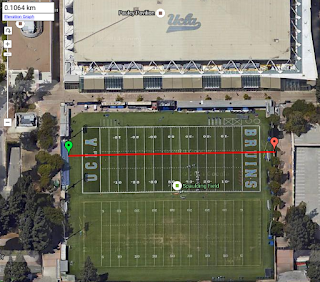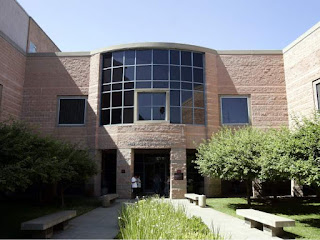As was expected, the property didn't sell, and was reduced in price in January of 2015, but only to slightly less than $2 million. And that's where it sold, on March 12th of 2015, for $907 per square foot. That amounts to about a 200% return on the investment, given the 14 months and three weeks the property was held. The turn of events produced a certain amount of amazement and head shaking; talk of a bubble would frequently follow.
Presuming that we are in a bubble, the hard question is, when do we expect it to end? For a way to think about how to answer that question, I point to the Economist. In an article from last year, the newspaper noted that this particular economic cycle is already running long at 74 months; if it continues through May 2017 it will pass the average of the last three. Prices may very well hold in Sonoma so long as the expansion continues. Thus we may see a seller's market in the Valley of the Moon for another summer, and perhaps even for two. |
| Board of Governors of the Federal Reserve System (US) Multiple Series retrieved from Federal Reserve Bank of St. Louis [FRED] August 11, 2015, available at http://tinyurl.com/p4cmzyv |
I kind of fell into a trap of presuming that rapid appreciation automatically meant a bubble exists. However, I wanted to get an idea of what asset prices in Sonoma look like contrasted with other assets. And once again, I turned to the St. Louis Federal Reserve Bank's excellent data analysis tool, FRED, to give me some perspective.
The electric blue line through the center of the graphic is the Case-Shiller Home Price Index for the San Francisco Bay Area. I indexed it on the trough of the last US recession, June of 2009. I also put in the same index for Cleveland (the dark blue dashed line) and Las Vegas (light blue dashed line).
I chose Cleveland as a comparison because its residential real property prices were basically increasing at a modest fixed rate for years, which is what you'd (more or less) expect of a heavily regulated market dominated by government lenders. Las Vegas, in contrast, is one of the more heinous examples of the real estate bubble; the pronounced rapid rise around 2006 is clear. Prices in Cleveland have now been declining-to-flat for nearly a decade, and while Las Vegas has seen a recent increase, the change is nothing like 2004-06. But in San Francisco prices have nearly returned to their peak.
There's something of an obvious culprit, of course. While the increase in house prices is remarkable, the increase in stock market prices is even more striking. White the sharp rise in gold-and-oil prices (the yellow and black lines, respectively) during Obama's first term are clear, those markets have gone through serious corrections in the last 24 months. But the NASDAQ's rise (solid green line) continues unabated, and unlike the dot-com era, the broader markets have followed (the dashed green lines are the S&P 500 and the Wilshire 5000).
Sticking the label "bubble" on this situation, though, requires clearing one more hurdle. Bubbles aren't just mispricing, where people think something's valuable and, after time, it becomes clear they were wrong. Instead, bubbles, as Noah Smith nicely explained in a column back in March, depend on greater fool speculation–that someone else will pay an even higher price for the same asset tomorrow.
When it comes to home prices in the San Francisco Bay Area real property market, no less an authority than Robert Shiller himself argues such extravagant expectations (and market inefficiencies) are indeed what's driving prices, creating the potential for a Minsky moment. His point (distilled) is that the lack of short selling and the difficulties associated with increasing supply are behind the problem:
When it comes to home prices in the San Francisco Bay Area real property market, no less an authority than Robert Shiller himself argues such extravagant expectations (and market inefficiencies) are indeed what's driving prices, creating the potential for a Minsky moment. His point (distilled) is that the lack of short selling and the difficulties associated with increasing supply are behind the problem:
"In San Francisco, for example, we found that while the median expectation for annual home price increases over the next 10 years was only 5 percent, a quarter of the respondents said they thought prices would increase each year by 10 percent or more. That would mean a net 150 percent increase in a decade. These people are apparently not thinking about the supply response that so big a price increase would generate. People like this could bid prices in some places so high that eventually the local market will collapse. Yet the smart money can’t find a profitable way to correct such errors today ... [t]he bottom line is that there is no reason to assume that the real estate market is even close to efficient. You may want to buy a house if you love it and can afford it. But remember that you cannot safely rely on 'comparable sales' to judge that the price is fair. The market isn’t efficient enough for that."
It always seems odd to me, however, that given the regularity of booms and busts, that we all still struggle to remind ourselves that this time isn't any different, and these conditions will end as all such expansions do. It is a truth Stanford economist Bob Hall (chairman of the academic panel that dates American business cycles) reminds us of when he points out that, economic syncopation being what it is, “[t]he next recession will come out of the blue ... just like all of its predecessors.” Perhaps we can take some comfort from our pattern of failing to constrain our expectations, even after three and a half thousand years of this stuff, and recognize it as a part of the human condition.
Knowledge of the problem, though, doesn't mean we should be sanguine about the consequences for individuals exposed to the volatility. The family home is the primary asset of the vast majority of households. It is worth remembering that during each of the last three recessions, as the graph above shows, prices for San Francisco residential real estate have fallen. Sometimes, the collapse has been rather spectacular. It's food for thought, I imagine, for those in the Bay Area who are expecting ten percent appreciation per year for the next decade or more ...




